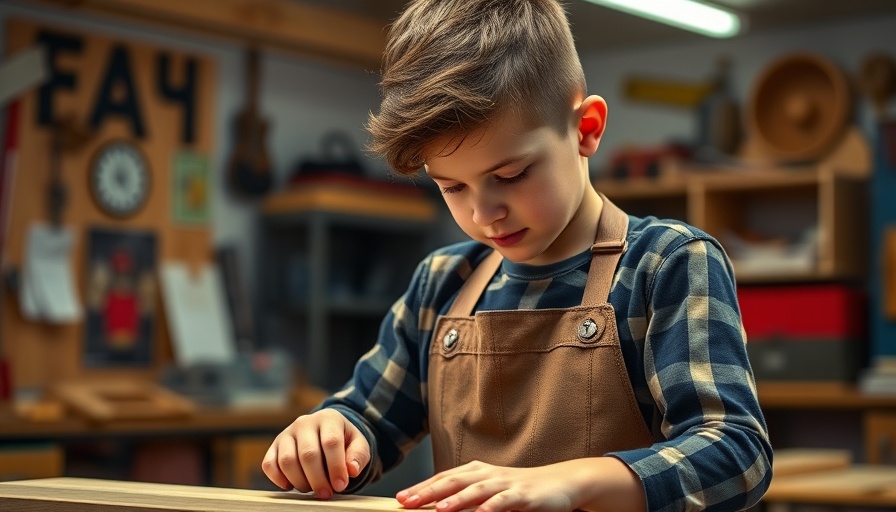
The Revival of Manual Labor Education in High Schools
In an unexpected turn of events, high school shop classes are experiencing a major resurgence across the United States. This revival comes as educators and students alike respond to the burgeoning influence of artificial intelligence (AI) in the workforce. With AI poised to take over many traditional white-collar jobs, high schools are adapting their curricula to prepare students for high-skill, high-wage manual labor careers that cannot be easily replaced by machines.
A New Era of Shop Classes
Schools like Middleton High School in Wisconsin have invested heavily in updating their facilities—spending $90 million on a cutting-edge manufacturing lab that showcases automated machinery alongside traditional woodworking and welding skills. Such initiatives are drawing a significant number of students; nearly 25% of Middleton's enrollment has engaged in these courses, signaling a cultural shift in how manual labor is perceived. As Quincy Millerjohn, a former English teacher turned welding instructor, remarks, "Kids can see these aren’t knuckle-dragging jobs." This change in outlook encourages students to integrate these programs with their academic transcripts, viewing them as equally valuable exchanges of knowledge alongside advanced placement courses.
High Skill, High Wage: The Real Appeal of Manual Labor
The financial reality of careers in trades has become a key motivator. Educators point out that positions such as ironworkers and boilermakers offer competitive pay that often exceeds $50 per hour. This contrasts sharply with the burden of student loans associated with four-year colleges. More educators are realizing the importance of providing vocational training as an alternative for those students who may not aspire to attend traditional college right away.
Education Meets Technology: A Paradigm Shift
Across the country, districts are investing in Career Technical Education (CTE) programs, successfully blending manual labor training with modern technology. For example, Spring Branch Independent School District passed a $381.6 million bond proposal that stands testament to the growing interest in vocational training, with enrollment in these programs witnessing a 9% increase over the past four years. As Jennifer Blaine, the school's superintendent, notes, "Not everybody wants to go to college, and some people don’t want to go to college right away." This expansion of offerings aligns perfectly with the increasing role of AI in the job market, opening pathways for careers that combine human craftsmanship with automation.
Preparing for the Future: A Dual Approach
As the landscape of work evolves, it becomes evident that education must evolve too. While AI technology aims to enhance efficiency and productivity in the workplace, it cannot replace the nuanced skills created by hands-on labor. The balance being struck in high school shops acknowledges the importance of both technical skills and critical thinking, ensuring that graduates are well-equipped for the challenges ahead.
Conclusion
As educators and students embrace this blending of technology and manual labor training, the traditional view of education is being rewritten. This evolution not only prepares students for a robust job market but also cultivates a generation that appreciates the tangible benefits of skilled labor. As high schools continue down this path, they offer a refreshed narrative that values craftsmanship and the human touch in an AI-driven world.
 Add Row
Add Row  Add
Add 
 Add Element
Add Element 

Write A Comment